 Robert Montgomery rides into town and trouble soon follows. 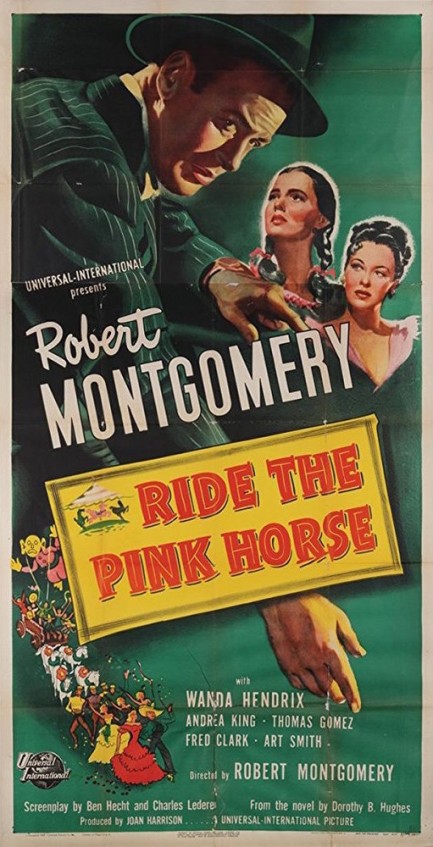
We'd seen the movie adaptation of Dorothy B. Hughes' novel Ride the Pink Horse before, more than once, but decided to watch it again because its premiere date was today in 1947. It differs from the book, of course—it's more streamlined, the real life town of Santa Fe becomes fictional San Pablo, the villains are more proactive, the heartless anti-hero Sailor becomes the not-so-bad Lucky Gagin, and the Mexican girl Pila is an adult instead of a fourteen-year-old. All these changes work fine. The most striking addition is the movie's use of Spanish dialogue, five or six lines worth, untranslated and unsubtitled. It adds authenticity, plus a touch of bonus material for Spanish speakers. Robert Montgomery directs and stars, handling the dual chores solidly. In the end Ride the Pink Horse is a good film noir that has increased in stature over the years. It's always been one of our favorites, but we admit that after seeing so many rote entries it's the quirky ones that tend to stand out. We wouldn't recommend this to novices as their first noir, but if you've seen many and are looking for something that surprises, Ride the Pink Horse will do the job. You can learn more about the movie by reading our detailed write-up about the novel here.
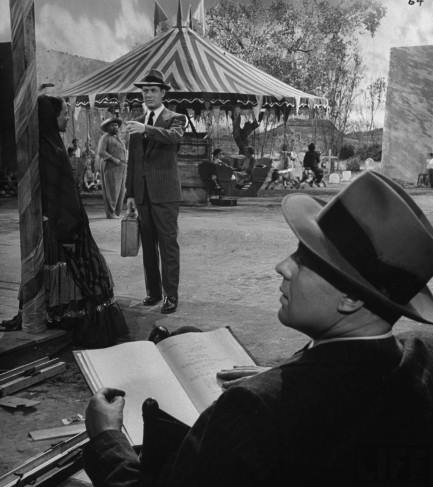 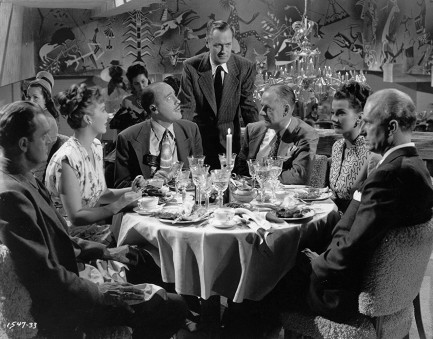 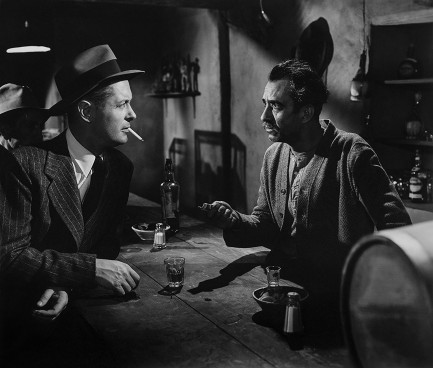 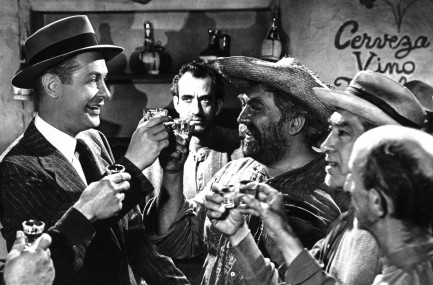  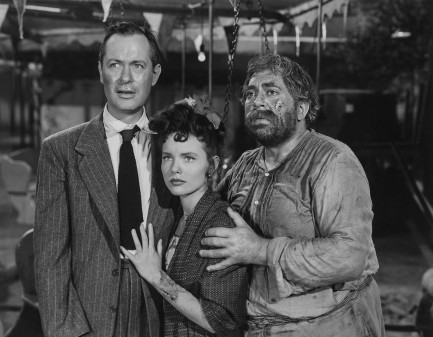 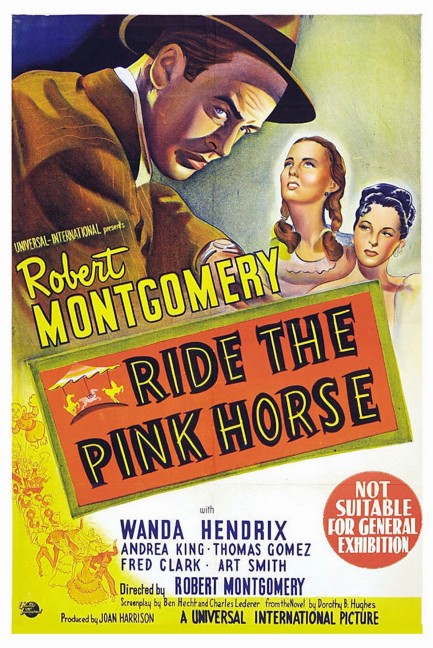
|
 |

The headlines that mattered yesteryear.
2003—Hope Dies
Film legend Bob Hope dies of pneumonia two months after celebrating his 100th birthday. 1945—Churchill Given the Sack
In spite of admiring Winston Churchill as a great wartime leader, Britons elect
Clement Attlee the nation's new prime minister in a sweeping victory for the Labour Party over the Conservatives. 1952—Evita Peron Dies
Eva Duarte de Peron, aka Evita, wife of the president of the Argentine Republic, dies from cancer at age 33. Evita had brought the working classes into a position of political power never witnessed before, but was hated by the nation's powerful military class. She is lain to rest in Milan, Italy in a secret grave under a nun's name, but is eventually returned to Argentina for reburial beside her husband in 1974. 1943—Mussolini Calls It Quits
Italian dictator Benito Mussolini steps down as head of the armed forces and the government. It soon becomes clear that Il Duce did not relinquish power voluntarily, but was forced to resign after former Fascist colleagues turned against him. He is later installed by Germany as leader of the Italian Social Republic in the north of the country, but is killed by partisans in 1945.
|

|
|

It's easy. We have an uploader that makes it a snap. Use it to submit your art, text, header, and subhead. Your post can be funny, serious, or anything in between, as long as it's vintage pulp. You'll get a byline and experience the fleeting pride of free authorship. We'll edit your post for typos, but the rest is up to you. Click here to give us your best shot.

|
|




















































































